In the first of these two articles, I looked at some paintings of artists’ studios prior to the Franco-Prussian War, including complex and challenging works by Horace Vernet and Gustave Courbet. In the late nineteenth century, this variant of still life painting became even more popular, and was used by some artists as their manifesto or advertisement.

Alfred Stevens had been an early enthusiast for the Japonisme which swept Paris. Insights into his life such as his The Psyché (My Studio) (c 1871) repay closer reading.
The French word psyché refers to the full-length mirror seen in this apparently informal view of Stevens’ studio, the name deriving from the legend of Cupid and Psyche. For this painting, Stevens doesn’t actually use a proper psyché, but has mounted a large mirror on his easel, perhaps to suggest that art is a reflection of life. A Japanese silk garment is draped over the mirror to limit its view to the model, breaking up her form in an unnatural way.
At the lower right, the artist indicates his presence with a cigarette, and there is a small parrot which might imitate his speech. The studio is littered with Japanese prints and the artist’s canvases, and one painting on the wall is a study for his early What They Call Vagrancy, which lacks most of the figures. This could well be an essay on reality and its imitation.
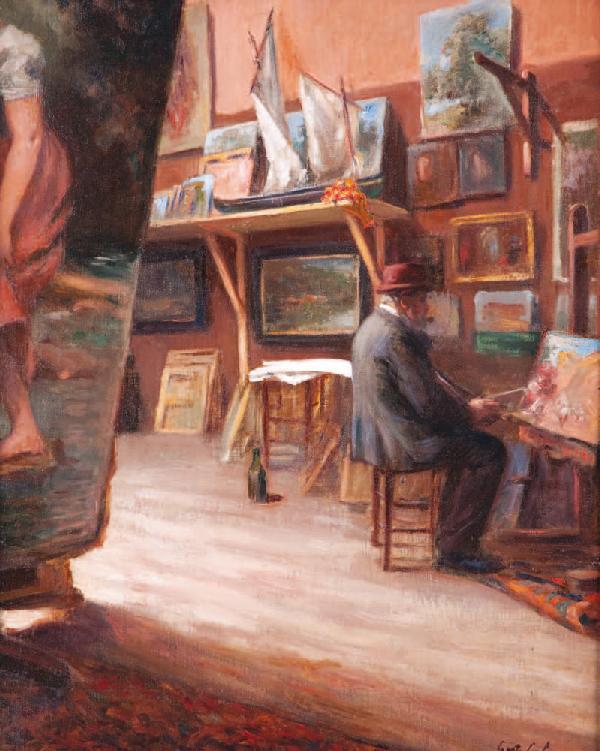
Gustave Colin was an artist whose style and career were on the periphery of the core group of French Impressionists. His undated Painter in his Studio appears to have been painted after the First Impressionist Exhibition.
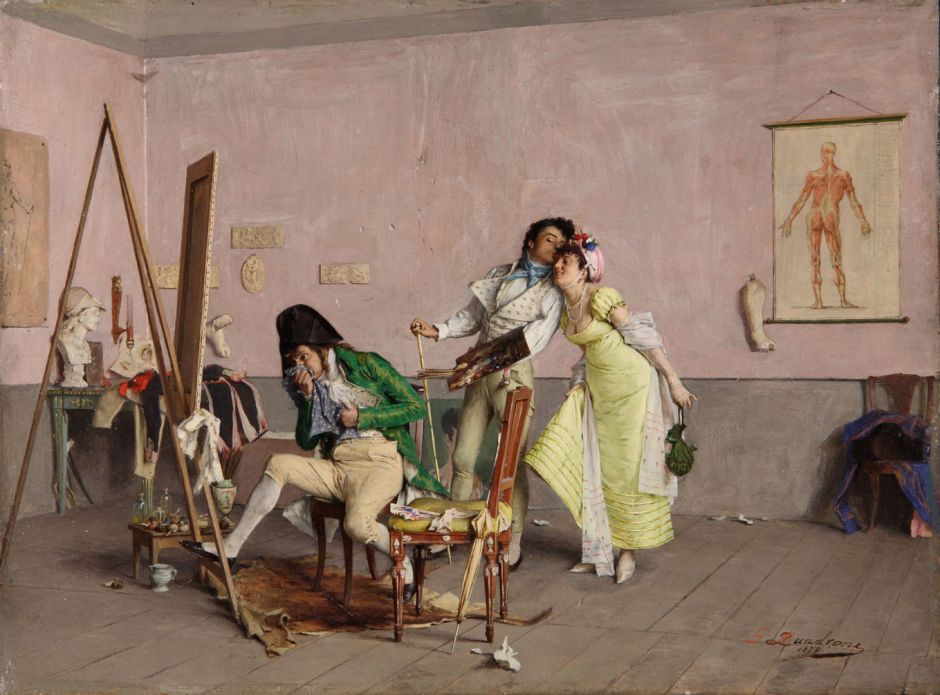
In Giovanni Battista Quadrone’s witty Every Opportunity is Good (1878), we’re given a detailed look at the painter’s paraphernalia, which includes several paint bladders on the low table behind the easel, and one on the floor. Although this was painted well after the introduction of paint tubes, bladders remained relatively cheap and popular quite late in the 1800s.
The American artist William Merritt Chase was a prolific painter of still lifes, and made many paintings of the studios he used during his career, some of which were strongly promotional.

Chase’s Tenth Street Studio from 1880 shows one of his portraiture clients, engaged in discussion with a painter who could be Chase, but recedes into the shadows. At the woman’s feet is an elegant dog, and she is surrounded by intriguing and tasteful objects.
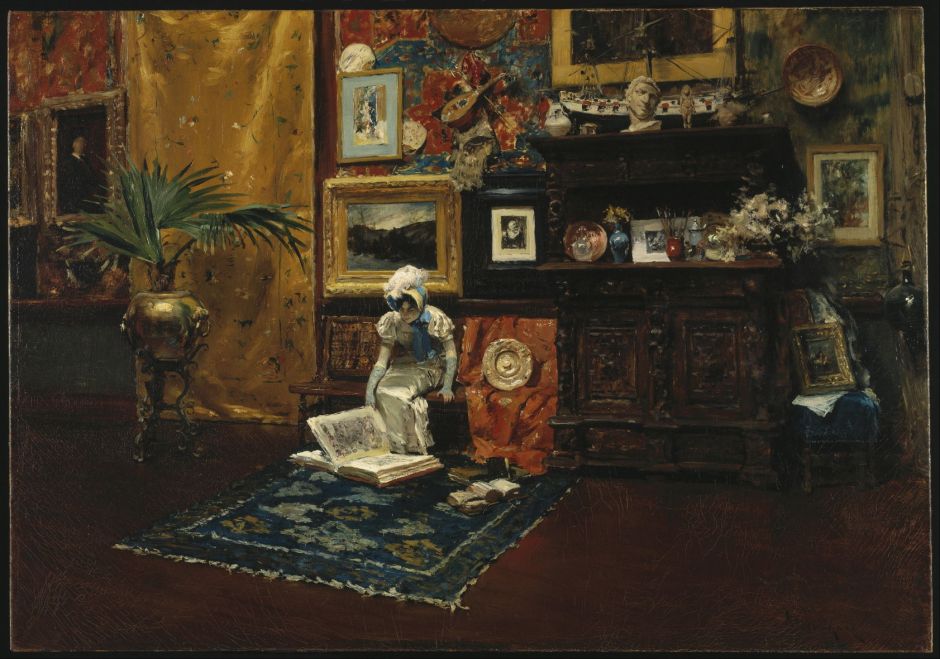
In his Studio Interior (c 1882), another fashionably dressed young woman is glancing through a huge bound collation of Chase’s work, sat by an even grander carved wooden sideboard, decorated with almost outlandish objects including a model ship, a lute, and sundry objets d’art.
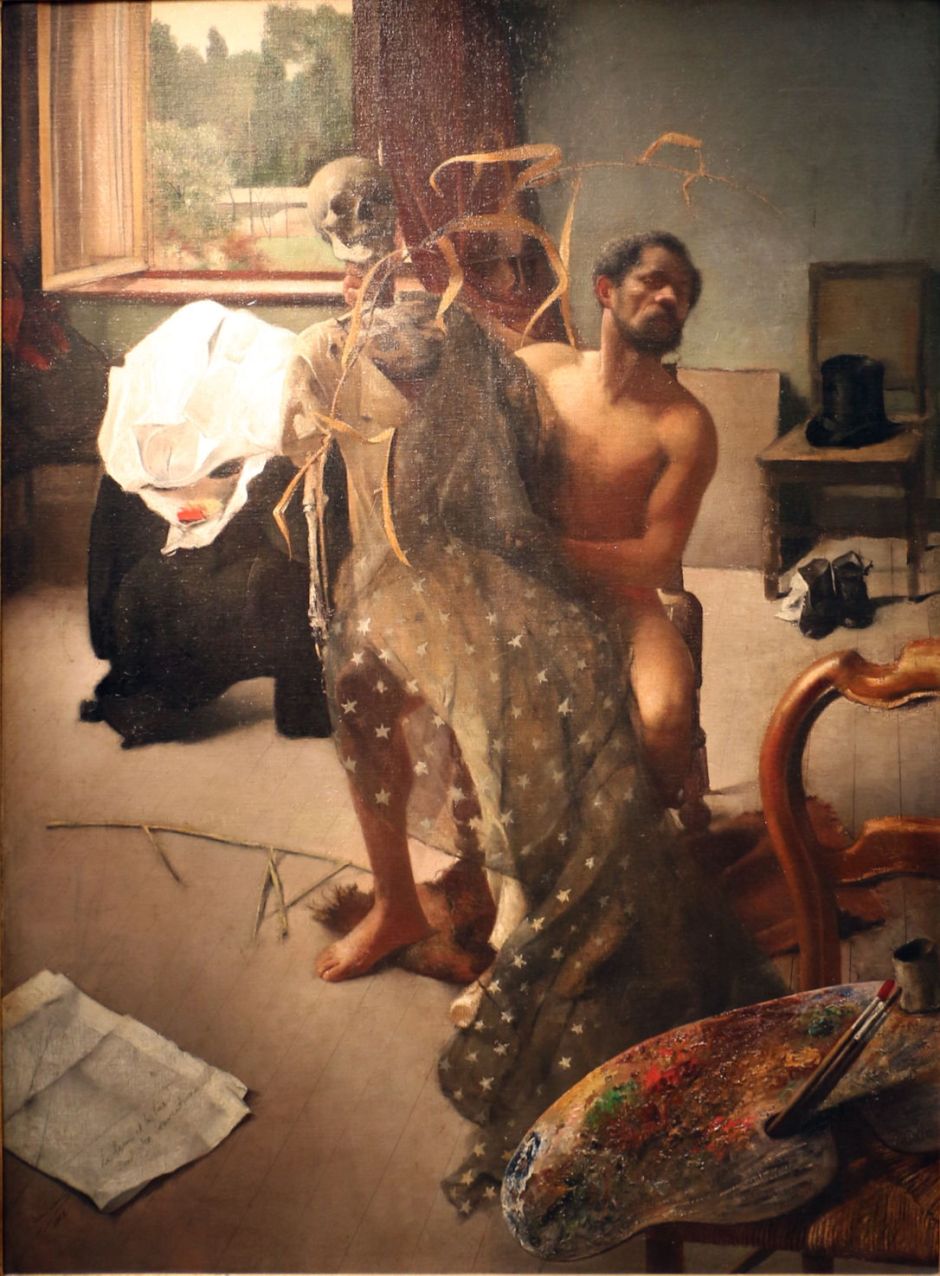
Léon Frédéric’s extraordinary Studio Interior from 1882 appears to be a fantasy self-portrait in which the artist is naked with a skeleton on his lap. The latter has been dressed up in undergarments with a long starry veil over them. His palette and brushes are at the lower right, and his clothes – including a top hat – are draped on chairs.
Another artist who painted himself working in his studio on several occasions was the realist Jean-Léon Gérôme, in his explorations of visual fidelity.

In about 1902, Gérôme added to his series of paintings of himself as a sculptor. His Self-Portrait Painting The Ball Player is a fascinating variation of the traditional form of self-portrait, in that he is here applying the colour to one of his polychrome sculptures, a figure of a ball player, who closely resembles those seen earlier in his paintings of sculptures.
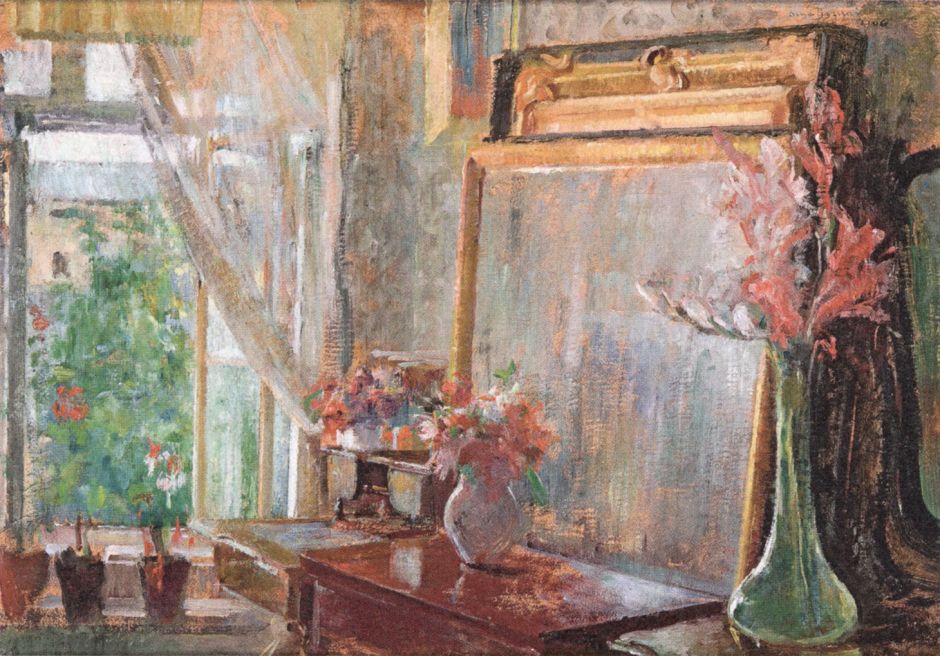
Olga Boznańska, the Polish Impressionist, painted her uncomplicated Interior of the artist’s studio in Krakow in 1906, and it’s probably the finest of her later paintings.

Jacek Malczewski, another major Polish artist of the time, had an obsession with death. In 1909, twenty years before he died, he envisaged the event taking place in his studio, in The Artist’s Death (1909). The figure on the left is presumably Thanatos, as she’s holding a scythe with her left hand.
One innovation brought by the Impressionists in their quest for landscape paintings made in front of the motif was the floating studio.

Claude Monet’s Le bateau atelier (The Studio Boat) shows his river vessel in 1876.
Two paintings from the late nineteenth century reveal teaching studios of the day.

While still studying at the Académie Julien, Marie Bashkirtseff painted In the Studio (1881), which gives the clearest insight into what her training was like. Her class was of course entirely female, and the Académie Julien was one of the few reputable schools which accepted women pupils at that time.
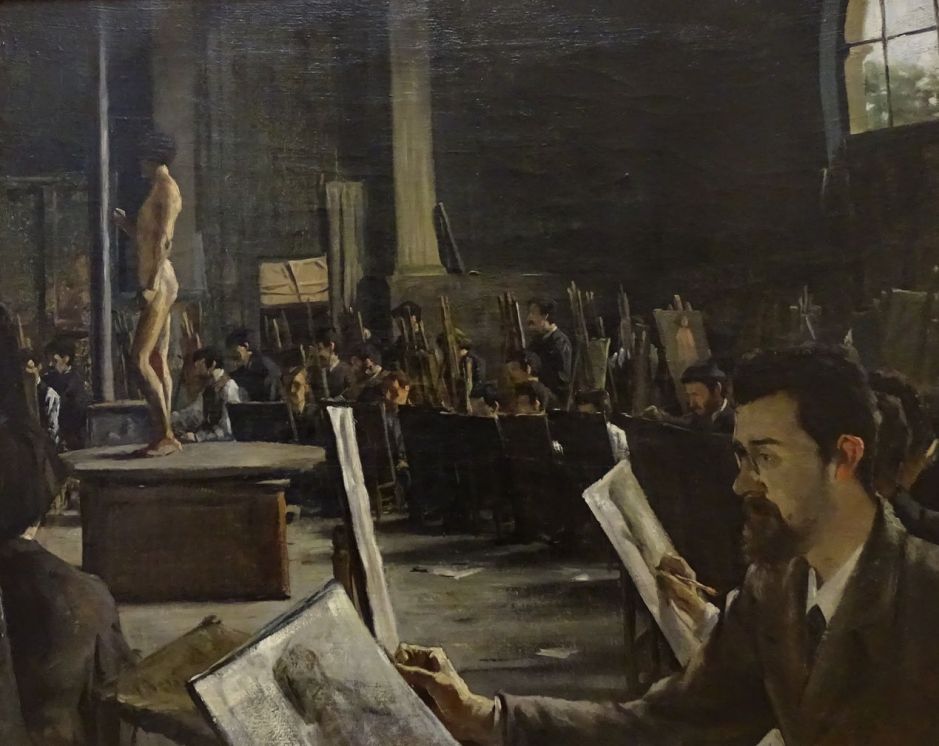
Cabanel’s reputation as an excellent and influential teacher resulted in his teaching atelier being large, and often over-subscribed. This painting by the otherwise forgotten Tancrède Baster, who was active around 1883-1890, shows Cabanel’s Studio at the École des Beaux-Arts in 1883.
Finally, a touch of humour. As some like Gérôme might have claimed, modernist paintings in the twentieth century could perhaps have been made by monkeys.

Gabriel von Max’s undated Visit to the Artist’s Studio shows a group of monkeys watching their leader handle the artist’s paint and brushes in his studio.

